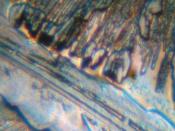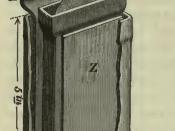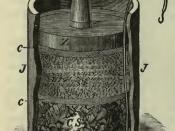Note: I couldn't paste in pictures and diagrams so please excuse any large spaces.
Planing my investigation
Method
1.Firstly I will measure 20ml of Copper Sulphate solution (CuSO4) in a measuring cylinder, for precise accuracy, and then pour the solution into test tube. I will place the test tube into a beaker and insulate the test tube, for minimum heat loss. (As shown in the diagram above.)
2.Secondly I will measure the required amount of Zinc (Zn) on a weighing scale, again for precise accuracy. I will then measure the starting temperature using a thermometer. Next I will pour the Zinc into the test tube containing CuSO4.
3.Finally I will measure the final temperature using a thermometer and record the temperature rise in ðc. (I will carry out all my experiments under lab safety precautions.)
Variables
*I will vary the mass of Zinc, & use the following Zinc weights: 0.5g,
1g, 1.5g, 2g and 2.5g.
*I will repeat each experiment twice for an average.
For a fair test I will need to control many variables. I will stir the reaction an accurate number of times. I will record the temperature with a thermometer waiting until the temperature begins to drop so the temperature has fully risen. I will measure the volume of the CuSO4 solution accurately with a measuring cylinder, and make sure the concentration of CuSO4 is constant throughout all the investigation. I will weigh the Zinc with a weighing scale and make sure it's free of any impurities.
Prediction and Science behind Plan
I predict increasing the mass of Zinc will increase the temperature rise of the Copper Sulphate solution.
When Zinc reacts with copper sulphate, the Zinc atoms displace the Copper atoms from Sulphate to form Zinc sulphate and Copper. This is simply because...


